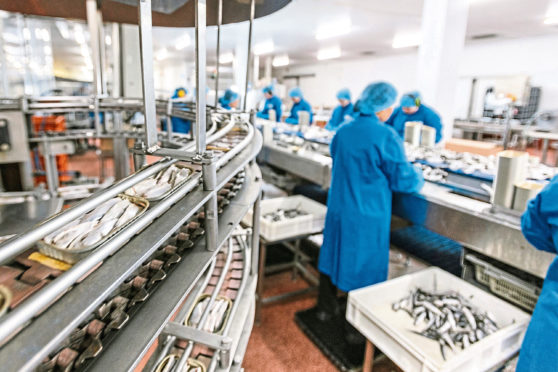The north-east seafood industry is an immediate growth opportunity and will be a vital part of Scotland’s post Covid-19 economic recovery plan, Sir Ian Wood said yesterday.
“Transformational” investment in processing can anchor jobs and value-adding activity in coastal communities for the long term, boosting sector turnover by up to 35% and creating at least 900 new jobs, with the potential for many more, he added.
Sir Ian, veteran entrepreneur and chairman of economic development partnership Opportunity North East (One), was speaking after the launch of a report backing growth ambitions for the region’s seafood processors.
The document – Future-proofing the Seafood Industry – pulls together the findings of a study commissioned by Aberdeenshire Council on behalf of the North East of Scotland Fisheries Local Action Group, One and trade body Seafood Scotland. The North East Scotland Fisheries Development Partnership (NESFDP) carried out initial scoping work.
Key findings include north-east ports accounting for 57% of all fish landed in Scotland, with more than 70 seafood processing, manufacturing and value-adding businesses active in the area.
The report says the 200,000 tonnes of fish and shellfish landed in the north-east annually are worth more than £233 million, while the region’s £700m turnover processing sector employs 4,000 people and is “nationally significant” as a “substantial” exporter.
Primary evidence for the study was gathered just before the UK went into lockdown in March, disrupting sales, but the industry expects landings to surge after Brexit.
There is widespread support from businesses, industry organisations and others for investment in processing capacity to capture a larger share of fish landed and maximise value-adding activity in the region.
The report identifies an “investable cluster” of businesses that can drive sector growth and sets out priority areas for action and investment. These include increasing processing and value-adding capacity, quality standards, developing support infrastructure, market development, product innovation, supply chain integration and automation.
The study’s findings have already informed the Seafood Transformation Project (STP), which is being developed by industry and partners including the Scottish Government, and led by One.
STP aims to significantly grow the Scottish seafood processing sector through a five-year action and investment programme supported by public and private sector cash.
Sir Ian said: “There is a critical mass of seafood processing businesses and fish landed in north-east Scotland, and we expect fish landings to increase after Brexit.
“These factors create a unique and immediate opportunity to deliver sustainable growth in this nationally-significant food processing, manufacturing and exporting sector.”
NESFDP chairman John Cox said: “Major investment is required in seafood processing – in capacity, new product development and skills to capture more value from local landings and reduce the flow south of unprocessed fish.
“The key driver will be financial support from both the UK and Scottish governments.”
